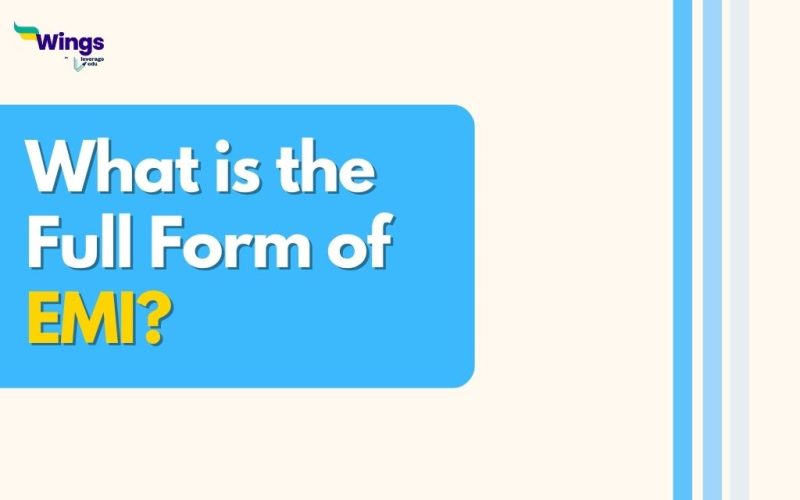Whenever you want to purchase something expensive or make a significant investment, you always think of doing it with an “EMI”. But what is an EMI, and what does it do? This blog will explore everything, from EMI full form, its components and functions to its types and advantages. Let’s get started!
EMI Full Form
Table of Contents [show]
The full form of EMI is Equated Monthly Instalment, an amount that you must pay your lender or bank every month to repay a debt or loan. It’s a popular payment method that allows people to buy expensive things (car, house) and pay for them in small, manageable instalments.
Components of EMI
An EMI is made up of two components:
- Principal: This is the original loan amount that the borrower takes. In each EMI payment, a part goes to the principal amount, reducing the overall loan amount with every instalment.
- Interest: This makes up a major portion of an EMI initially. Later, repayment of the principal amount increases and the interest part decreases with time.
Types of EMI Loans
There are many loans that can be repaid through EMIs. Some of them are given below:
- Personal loan: It’s an unsecured loan taken for expenses like home improvement, family vacations, medical emergencies and so on.
- Home loan: A secured loan taken for buying a house, with repayment tenure of 10-30 years.
- Car loan: A secured loan taken to buy a car, where the car acts as a collateral. A down payment (a part of the total loan amount) is also charged. For more information, you can check the specific car loan requirements, including necessary documents and eligibility criteria.
How Do EMIs Work?
The lender first calculates the interest for the entire loan period when a person takes a loan. Then the entire loan amount and interest are divided into EMIs that must be paid on a fixed date each month. Both the interest and principal amounts remain constant throughout the repayment period. After the last instalment of the EMI is paid, the borrower can collect a no-objection certificate, NOC, from the lender.
There are other options to reduce or close EMIs, like prepaying the total loan amount entirely or partially. Note that the lender can also charge for early closure of the loan. One can also transfer their loans to other lenders with lower interest rates, reducing the EMIs.
EMI Full Form: Advantages
There are several advantages of opting for EMI as a payment method:
- EMIs allow you to buy expensive items right off the shelf, even though you might not have the funds to pay for them at that very moment.
- Planning for other expenses and investments out of your income can be done easily.
- You can decide on the amount per EMI or the payment duration, depending on your financial standing and income.
- Timely payments of EMIs improve your credit score.
Must Read: What is the Full Form of ESOP?
Must Read: What is the DICGC Full Form?
We hope this blog helped you understand EMI full form, its components, types, function and advantages. Check out this full forms list to learn more acronyms like this, and keep following Leverage Edu.
 One app for all your study abroad needs
One app for all your study abroad needs















 45,000+ students trusted us with their dreams. Take the first step today!
45,000+ students trusted us with their dreams. Take the first step today!
